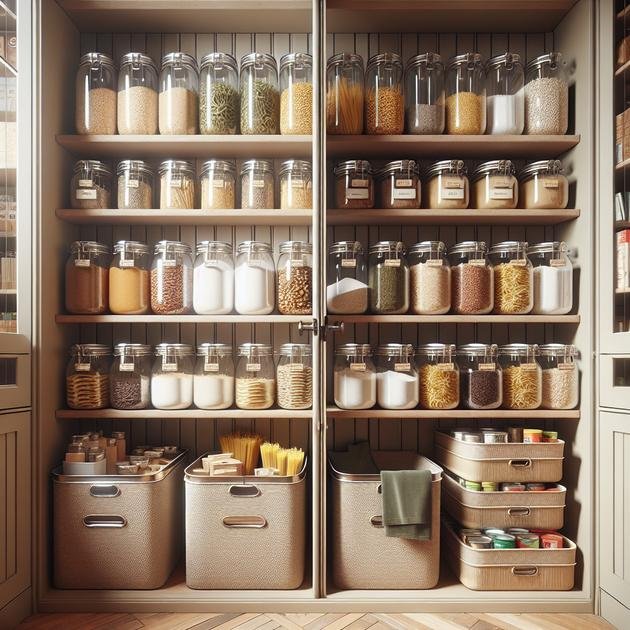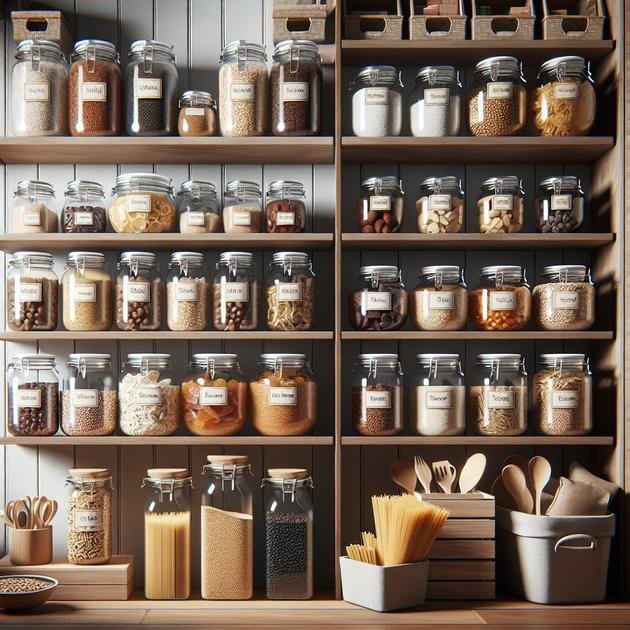Pantry organization involves categorizing items, utilizing clever storage solutions like pull-out shelves and bins, labeling effectively, and managing food by expiration dates to maximize space, reduce waste, and enhance kitchen efficiency.
Ever wondered how to transform that cluttered pantry into a masterpiece? Pantry organization might just be your answer! Whether you’re struggling with small spaces or just want everything to have its place, I’m here to explore practical tips that will have you feeling like a pro. Ready to dive in?
clever storage solutions for small pantries
Maximizing space in a small pantry requires clever storage solutions. One effective method is using tiered shelves to create additional layers, allowing you to store more items without stacking them too high. Consider installing pull-out baskets or lazy Susans to easily access items tucked away in the back. Magnetic strips on the inside of doors can hold small spice jars, while utilizing under-shelf baskets can effectively double the existing space.
Incorporating transparent containers not only helps to conserve space but also offers the convenience of seeing what you have at a glance, reducing waste and the risk of overbuying. Don’t overlook the value of labeling; clear labels make it easier to find things quickly, saving you time during meal prep.
the best containers for keeping items fresh

Choosing the right containers is essential for keeping pantry items fresh. Airtight containers prevent moisture and pests from spoiling dry goods like flour, rice, or pasta. Glass jars are excellent for storing grains and cereals because they are non-porous and don’t absorb odors. For bulkier items, consider using stackable bins that optimize space and maintain freshness.
Vacuum-sealed bags are ideal for preserving the freshness of dried fruits and nuts by removing air that causes spoilage. Using mason jars for spices helps retain their aroma and extends their shelf life. Always seal lids tightly to ensure maximum freshness. The use of clear containers allows you to easily identify contents, reducing the chance of forgetting what you have.
how to categorize your pantry items
Categorizing pantry items effectively can transform a cluttered space into an organized haven. Start by dividing goods into main categories like grains, snacks, canned goods, and spices. Within each category, further subcategorize items by type or use. For example, arrange grains into rice, pasta, and cereals. Use clear bins or baskets to group similar items, which can make finding things quicker and reduces time spent searching.
Label each bin with its category, ensuring easy identification and return. Consider arranging items by frequency of use; keep everyday essentials at eye level and less-used items higher up or further back. Rotating stock so older items are at the front ensures that nothing is forgotten and reduces waste.
ways to maximize shelf space

Maximizing shelf space in your pantry involves strategic organization and creative techniques. Use adjustable shelves to customize the height according to your storage needs, which ensures no space is wasted. Introduce under-shelf baskets that hang below existing shelves, effectively doubling the storage space available for smaller items like snacks or packets.
Stackable containers are perfect for utilizing vertical space efficiently. Opt for square-shaped containers, as they save more space compared to round ones. Install door-mounted racks that provide extra storage for spices, condiments, or cleaning supplies. Make use of tension rods horizontally as dividers to keep baking sheets and cutting boards organized and easily accessible.
labeling systems that work wonders
Effective labeling systems can dramatically improve the organization of your pantry. Start by using consistent label designs for a uniform look, making it easier to locate items at a glance. Chalk labels are a popular choice, offering flexibility and a modern aesthetic. For a more permanent solution, consider using waterproof and smudge-proof labels for high-moisture areas.
Employing color-coded labels can further enhance categorization, allowing different colors to represent categories like snacks, baking supplies, or canned goods. Labeling shelves rather than individual items can be a time-saver for areas where items frequently change. Ensure that labels are placed in a visible spot, and use large fonts to make them readable from a distance.
organizing by expiration dates

Organizing your pantry by expiration dates is a smart way to minimize waste and ensure food safety. Begin by placing items with the nearest expiration dates at the front. This practice encourages the use of older items first, reducing the chance of them spoiling. Implement a first in, first out system by always placing new purchases behind older stock.
Consider using sticky notes or labels to clearly mark expiration dates, making them more visible at a glance. Divide shelves or bins into sections such as ‘use now’ and ‘later’ to further organize by priority. Position set bins for quick, weekly checks to keep track of what needs to be consumed soon.
the benefits of a spotless pantry
Maintaining a spotless pantry offers numerous benefits that extend beyond aesthetics. A clean pantry reduces the risk of pests, such as rodents and insects, which are attracted to food residue and clutter. Regular cleaning helps identify and dispose of expired or spoiled items, promoting better food safety and hygiene.
A spotless pantry also enhances efficiency and ease in meal preparation. With neatly organized shelves, you can find ingredients quickly, saving time and reducing stress. A clean environment inspires creativity, making the cooking experience more enjoyable. Furthermore, it promotes a sense of calm and control in your kitchen, encouraging healthy eating habits by showcasing nutritious options.
how to tackle deep cabinets effectively

Deep cabinets can be a challenge, but with the right strategies, you can maximize their potential. Start by installing pull-out shelves or drawers to access items at the back without rummaging through the front. This setup offers easy visibility and access, preventing items from being forgotten.
Consider using lazy Susans for deep corners, allowing you to rotate items and reach what you need quickly. Place tiered organizers to stack and store canned goods or condiments, making use of vertical space. For larger items, use clear bins to group like items together, which can be pulled out and examined at a glance.
Labeling each section can further enhance organization and ensure everything is returned to its proper place, maintaining order over time.
Wrapping Up Your Pantry Organization Journey
Organizing your pantry might seem daunting at first, but with thoughtful planning and smart strategies, it can transform your kitchen into a more efficient space. From categorizing items effectively and embracing clever storage solutions to maintaining a spotless pantry by organizing through expiration dates, each tip plays a vital role.
Remember to utilize labeling systems that simplify finding what you need, and make the most of those deep cabinets by employing pull-out shelves and tiered organizers. All these efforts combined will not only introduce a new level of convenience but also promote better food management and reduce waste.
As you implement these ideas, you’ll find that a well-organized pantry can make cooking more enjoyable and stress-free. So, take those first steps towards a clutter-free kitchen and relish the benefits of a tidily arranged space.





